The endless canvas of Ray Gabaldón
The Carpinteria artist on crafting bespoke leather moccasins, following creative urges, and finally calling himself an artist
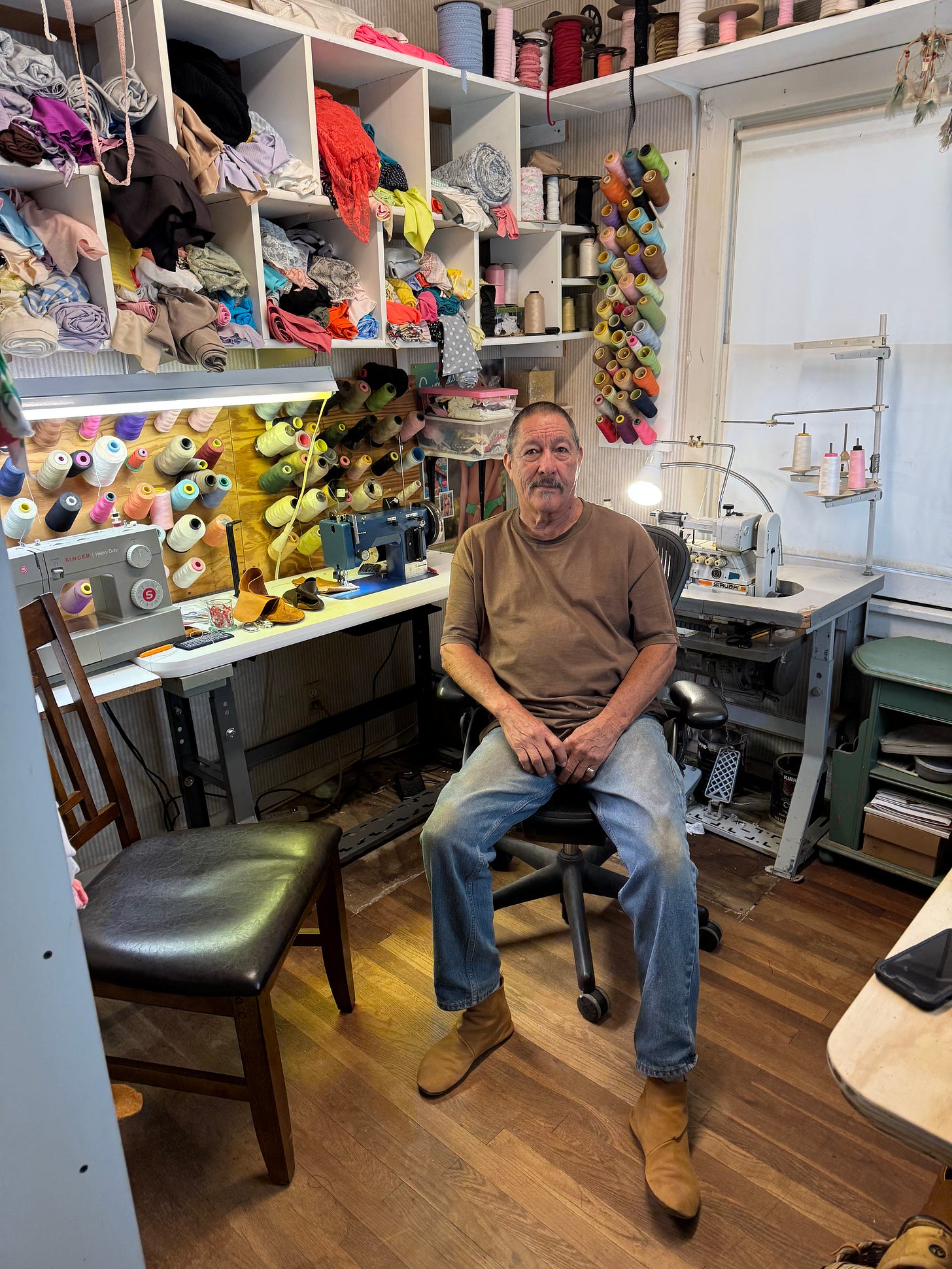
You may recognize his wooden sculptures hanging at Porch in Summerland, or maybe you’ve seen his wooden spoons, brushes, and bowls at Domecíl downtown. At one point in time, you might’ve seen him building cars or even houses around Carpinteria.
It’s likely these days — if you see him — he’ll be wearing tobacco-colored leather moccasins, handmade (by him) and totally bespoke. Pretty slick for only starting this new venture a couple months ago.
Ray Gabaldón is just doing what he does best: making things with his hands, following his latest creative spark.
This week — at his Carpinteria home and studio he shares with his wife Tona and daughter Teka (my good friend) — I asked him about his foray into moccasin making.
Large swaths of leather and buffalo skin — of all colors and textures — are draped over a table in the corner of the living room, right at the entrance of his workshop where sewing machines sit beneath shelves of colored fabrics and threads. Outside, he’s got a workshop for wood working, too.
He’s wearing his day-to-day uniform: a plain, slightly-oversized brown tee and a good pair of medium wash jeans. His light brown mocs and gold pinky ring (standing undeniably strong as his only accessory) added the perfect dose of effortless personality, making it all feel like Ray.
That’s the coolest part about Ray. He’s never trying too hard. He’s just being true to himself, and nourishing his creativity one project at a time.
Tell me about where you’re from. How do your roots define who you are today?
I’m part Navajo and part Mexican. I was born in Albuquerque, New Mexico and moved to East Los Angeles when I was 10. I’ve always liked wood art since I was young.
When I was 13 years old, I was hit by two cars while riding my bike with a friend. It put me in a coma for about 2 weeks, and the doctors told me I’d always struggle because of the damage. But I’ve been able to live through it, and learn and create and have a family and everything.
To this day, I try anything. If someone says I can’t do it, I always find a way. I just figure things out.
Do you remember the first time you created something with your hands? What was that like?
I used to build lowriders and hot rods. I started when I was 17 years old. I had always liked lowriders, but I didn’t have any money. One day my brother said, ‘Hey, there’s a car this older woman has down the street and she wants to sell it.’ We bought it from her for $35 and took it home and replaced the transmission — that was all that was wrong with it.
Then, as soon as I started driving, I went to a muffler shop and had it lowered. Later, I learned how to do it myself and for a while I had my own business lowering trucks for dealerships.
Every weekend I'd go to Whittier Boulevard with a good friend of mine and cruise — Friday nights, Saturday nights, and Sunday nights.
It was a 1954 hard top. I designed the wheels, put a Mercury bumper in the back, chopped the roof, put in the 3-piece back window, and put a ZZ Ford engine in it. Man, it was fast. I’d ride around and play music from an old record player on springs to keep it from skipping — all oldies from the ‘60s.
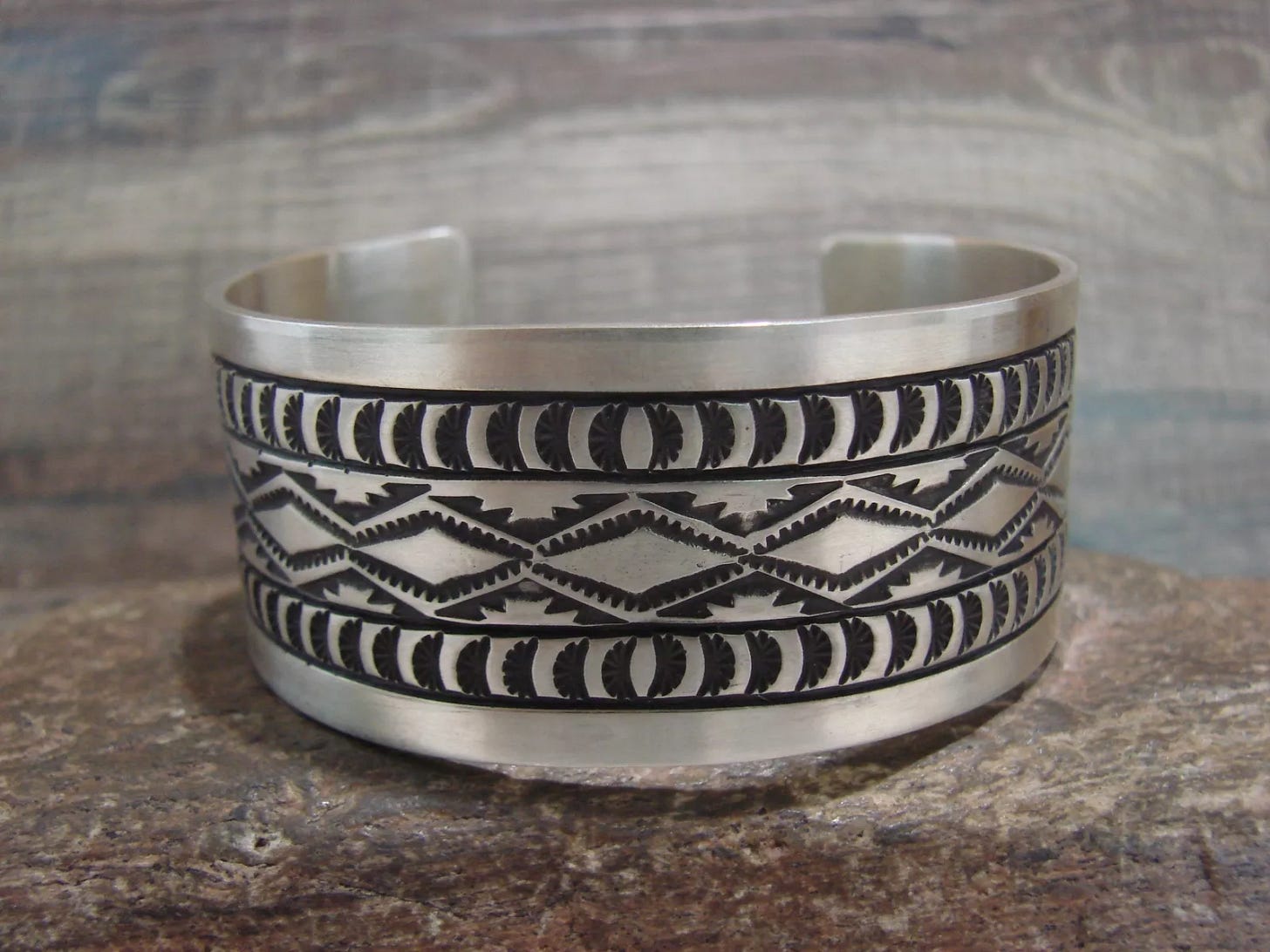
After that, I started making and repairing Navajo jewelry for a shop in Culver City. They provided all the material and the space, and I learned a lot. When I left there after about 3 years, I continued making silver jewelry and stamping it with my own Navajo stamps — each with their own designs. I had probably 25-30 different stamps I’d use on bracelets, necklaces, you name it.
You’ve become known around town for your wooden sculptures, created with burnt drift wood from the 2017 Thomas Fire and the subsequent mudslides. What’s at the heart of those creations?
These pieces come straight from my heart. We’ve lived in Carpinteria for decades. Tona actually grew up in Carp. The tragedy of the fires and mudslides in our community was…terrible.
I walked along the beach right after it all, just overwhelmed, and I started picking up burnt driftwood and other objects on the beach. And with it I started making these wooden people, these sculptures that symbolize all those who went missing or lost their lives. Tona started making her own sculptures, too. It was a way for us to try and process everything. We ended up showing them last year in Ojai, in the first art show either of us have ever had.
I still make these sculptures today, and every time I make one it’s just a heavy feeling. I even have some sitting on my work table that have been there for three weeks, and I can't touch them for some reason. But I like doing it. It’s spiritual. I don't do it as a production.
Now you’re making moccasins! Tell me how and why this new project began.
Growing up, I always wore moccasins — the kind that tied all the way up to your knees — and for some reason over the years I just stopped. Recently, I’d been telling Tona that I’d love a pair of moccasins, and she said, ‘Well, why don’t you make some? You’ve got the sewing machine, you have some leather.’ So that was it.
I already knew how to sew because I used to make custom covers for cars, and have also sewn some clothes. But sewing moccasins — especially leather — takes a lot of trial and error. The style I’ve been making isn’t easy to create because you have to work backwards — you work inside out. I use cow hide, with thicker buffalo skin for the sole.
For the clasps, I’m using old buffalo nickels I’ve been collecting for decades.
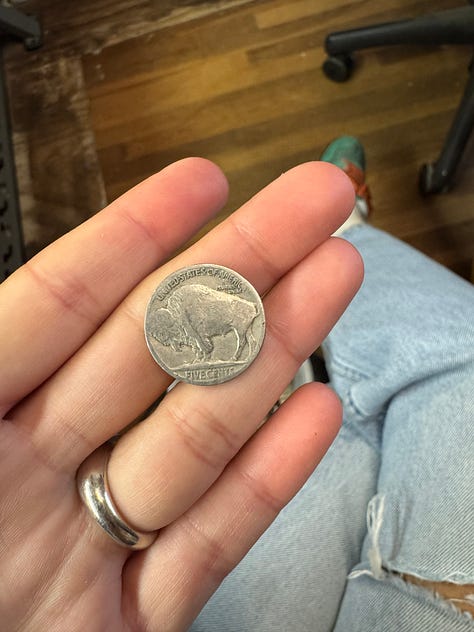
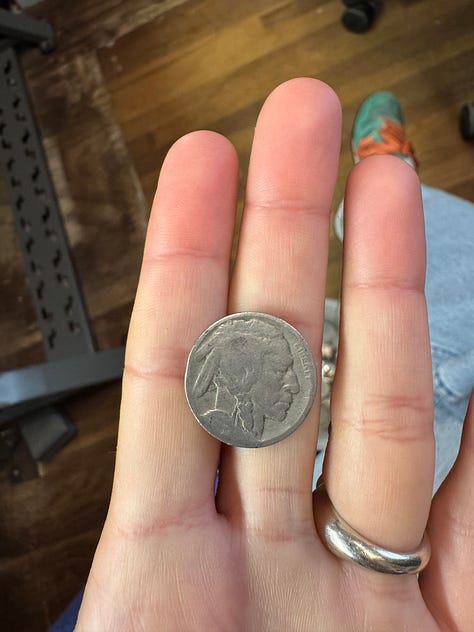

I take a nickel and then, with a mold I made out of hard wood, I pound it until it’s round. Then I solder the pin on it, bend it, and insert it into the leather.
The best part is there’s all kinds of different ways you can make a moccasin. You can go all over the world and every culture or tribe makes their moccasins in their own unique style. I made some for Tona and instead of the buffalo coin as the clasp, we used a button that belonged to her mother. It’s all about using your own little details to make it yours.
I’ve made a handful of pairs so far. It’s just for fun, they’re not for sale at this time. Next, I’m trying a method where I sew it all by hand with sinew thread or nylon string. Like everything I’ve made before, I’m just experimenting and seeing how it all works out.
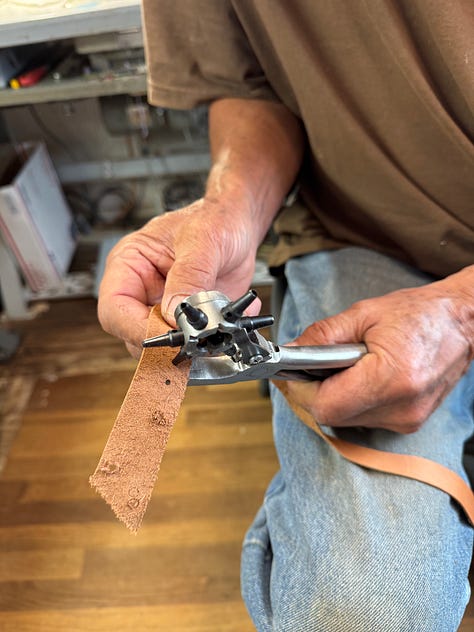
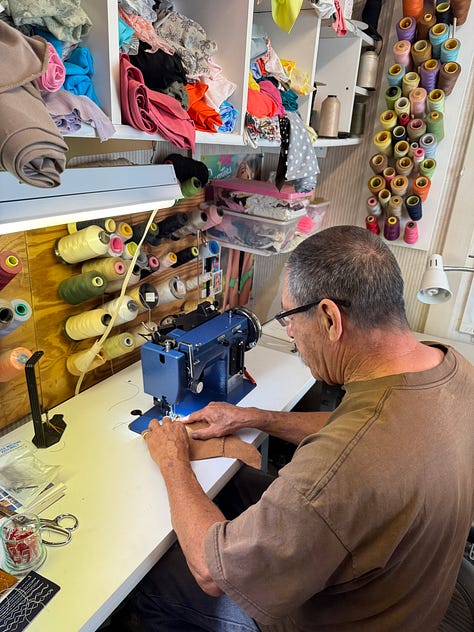
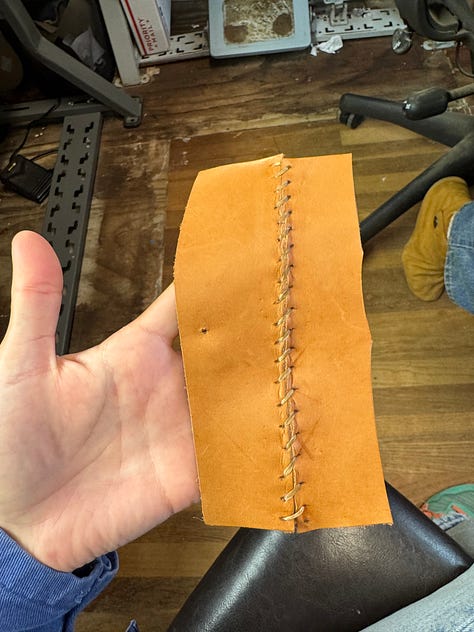
What do you typically like to wear and why?
I don’t think about fashion much. I usually wear jeans and a plain t-shirt. When I go to town, I’ll wear a shirt that doesn’t have stains on it, and a navy jacket I really like that I bought at Domecíl. It’s nice. Sometimes I’ll splurge on something if I like it and it’s well made.
You didn’t always see yourself as an artist. What would you say to someone who doubts their own artistic abilities?
Everyone is an artist in one way or another. Don't be afraid. Just keep going.





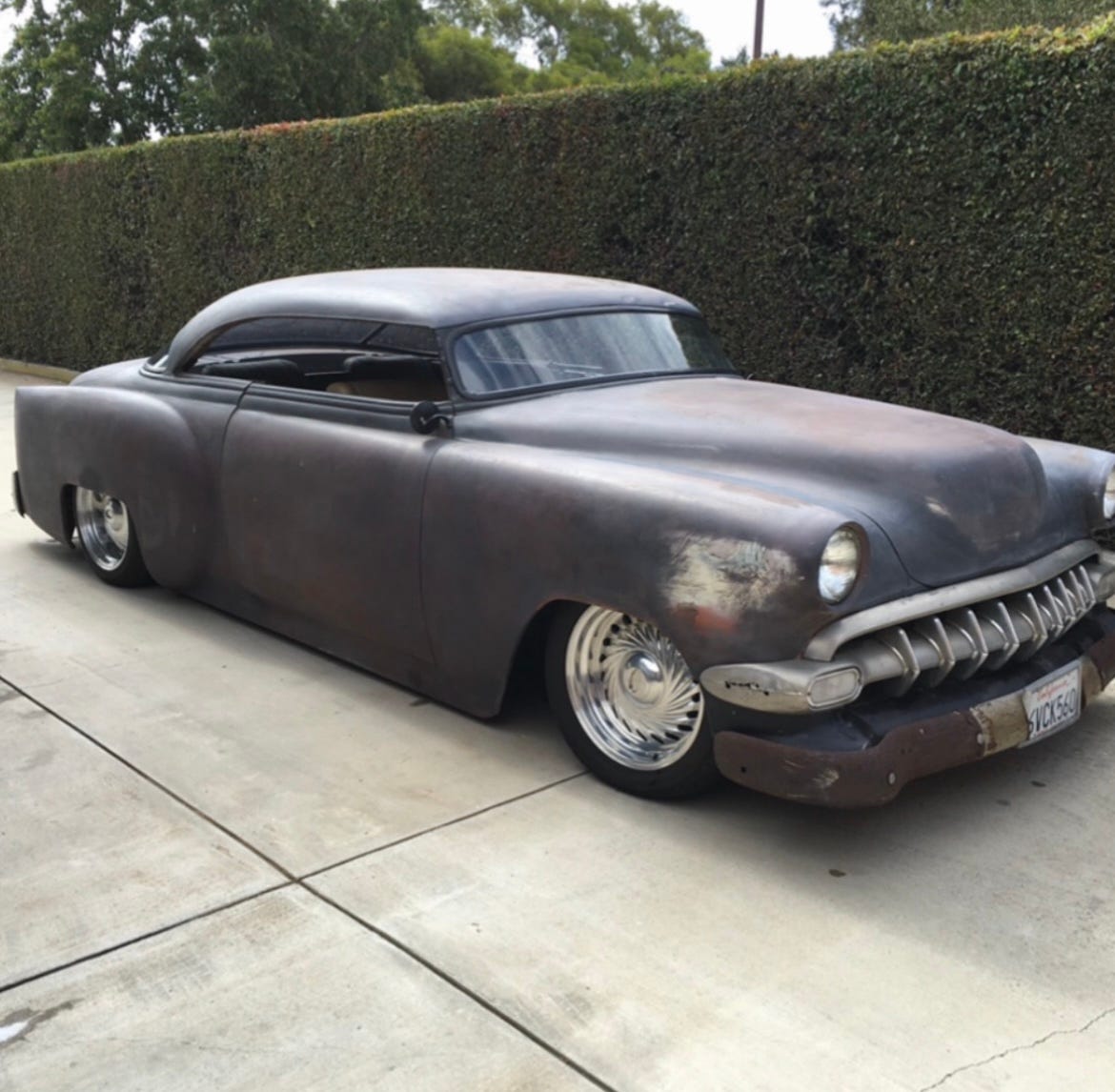
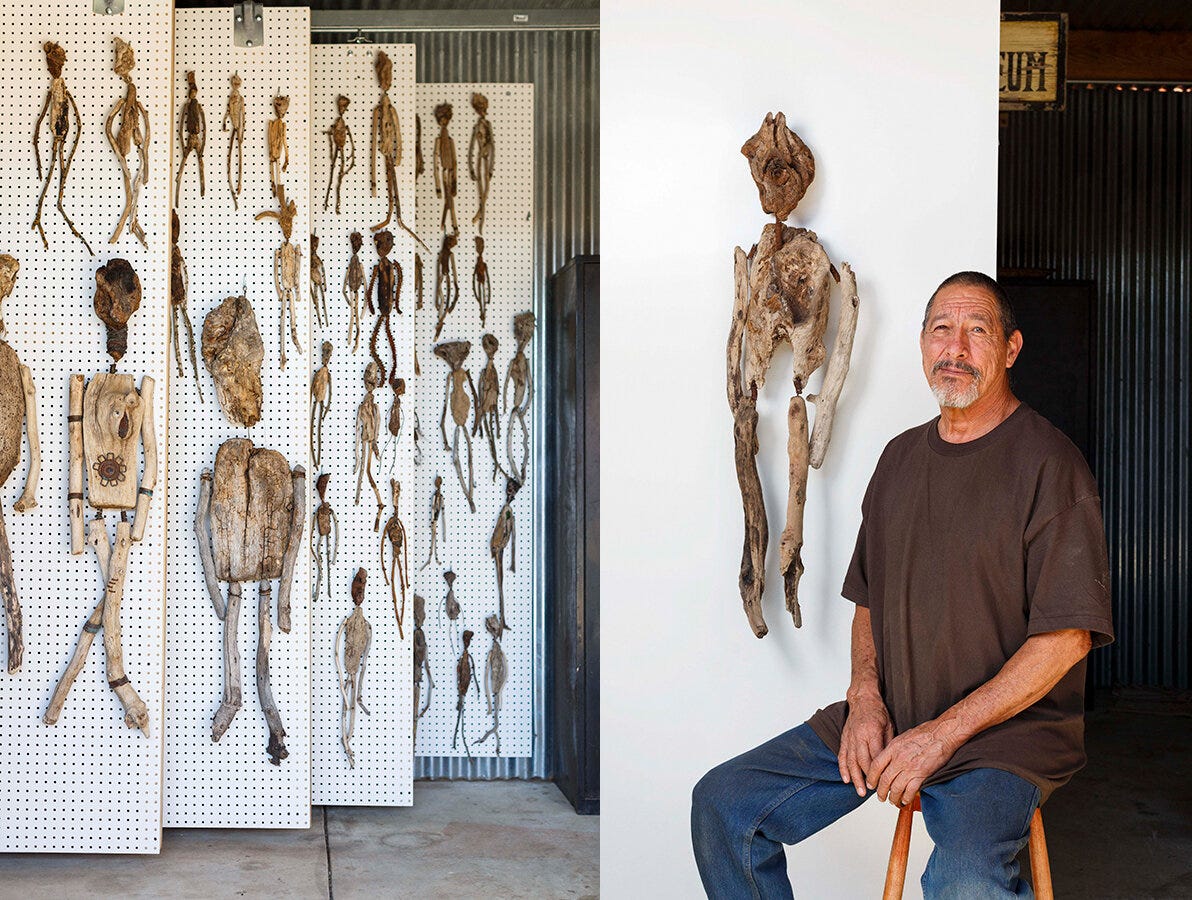
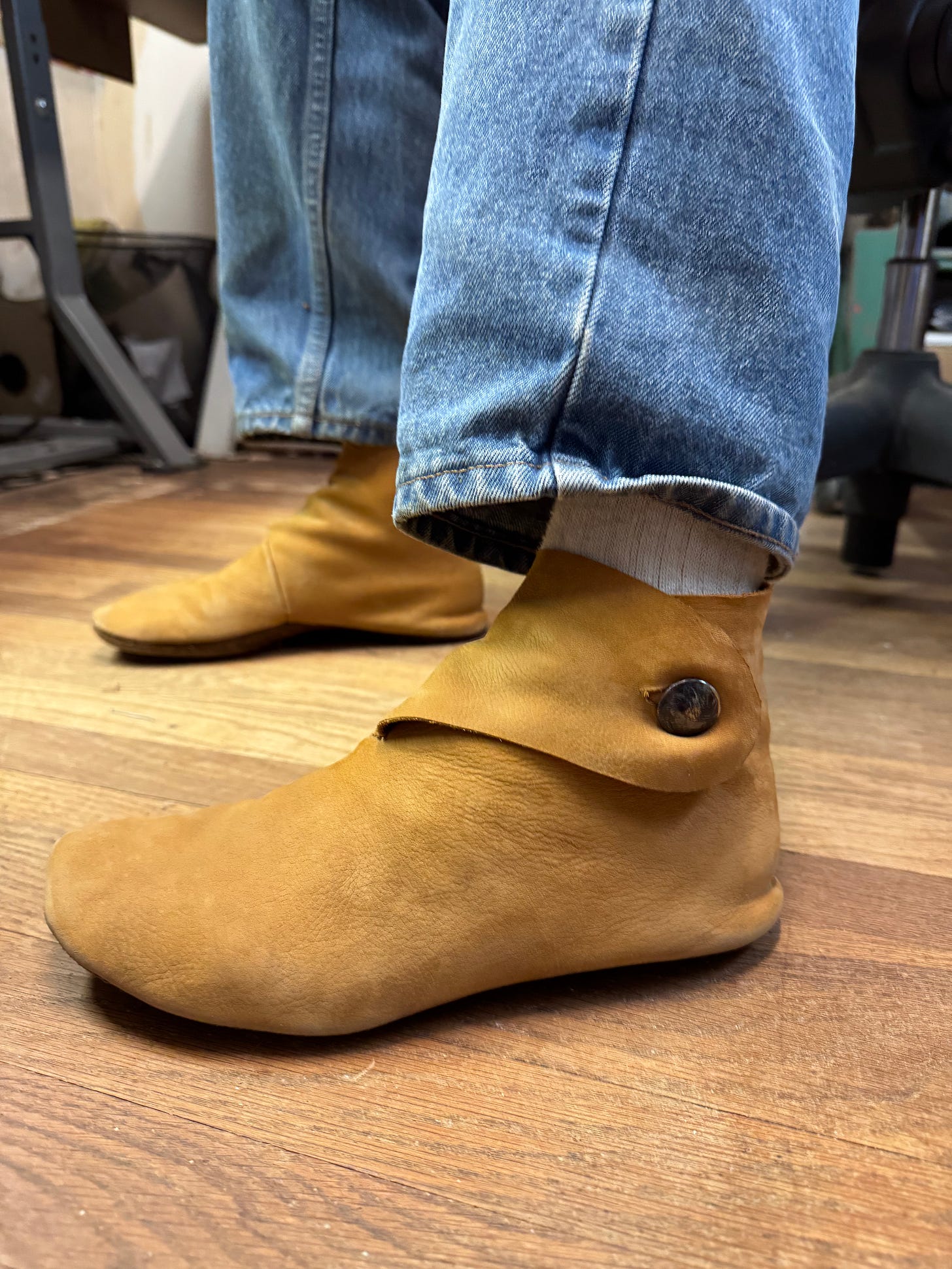
Incredible
Great job Cami telling Ray’s story!